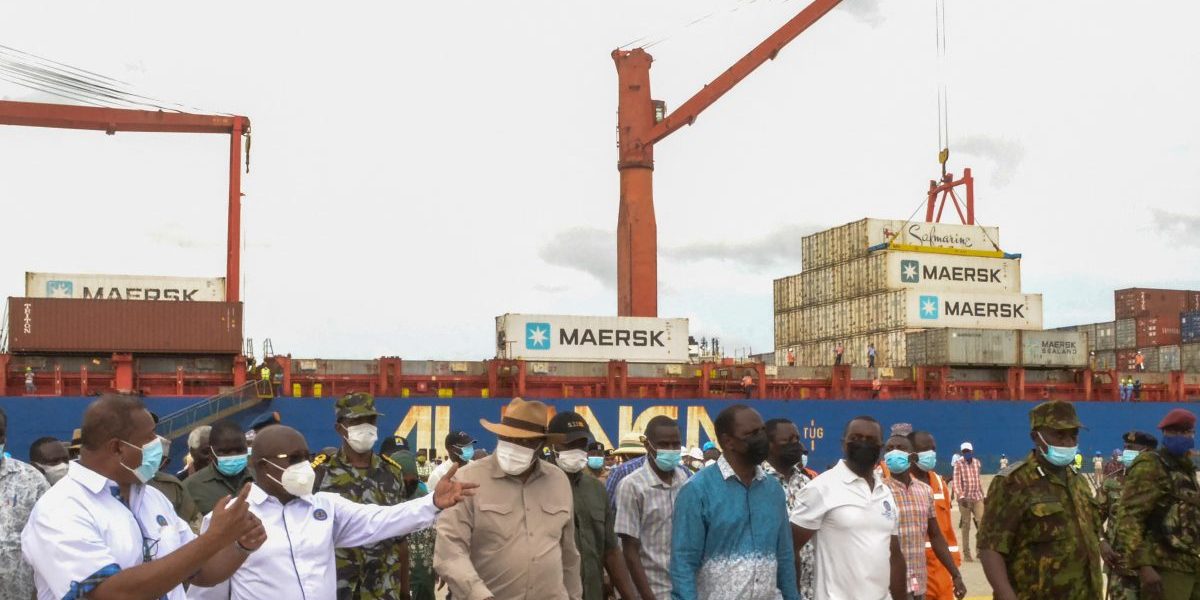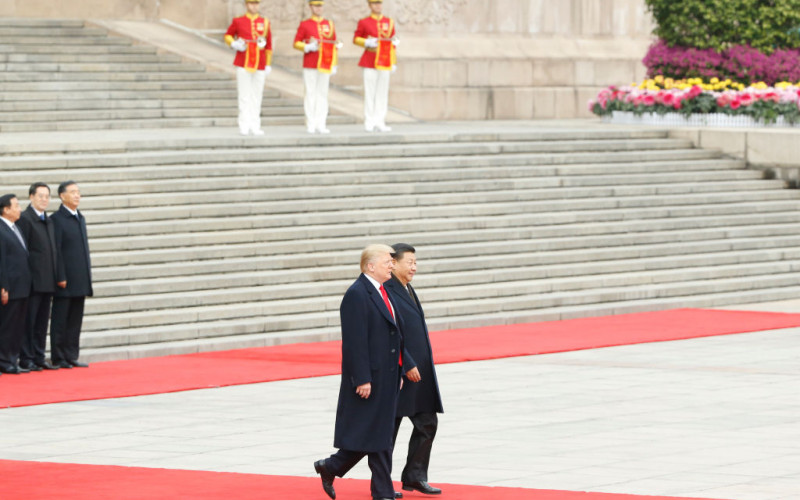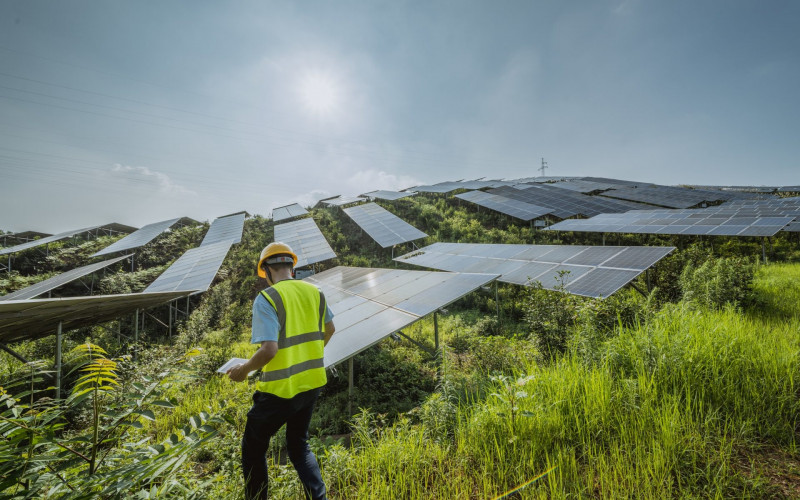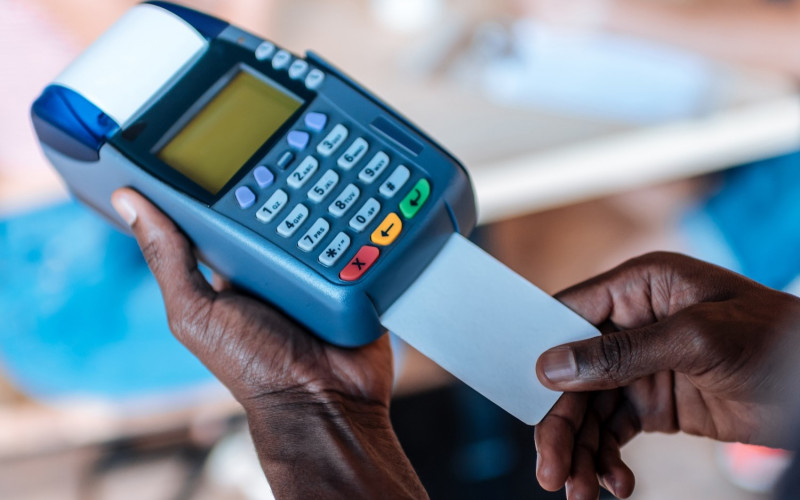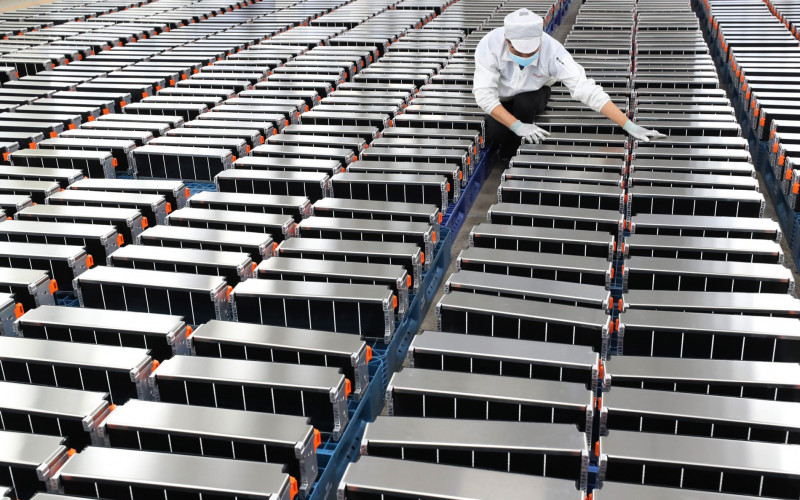Executive summary
This appeals to governments in the Global South, while also serving Beijing’s focus on connectivity via the Belt and Road Initiative (BRI). However, such projects often exact a steep environmental and socio-economic toll, while the massive budgets involved can challenge governance mechanisms. These dangers are exacerbated when ports are embedded in development zones. This policy briefing examines the environmental, socio-economic and governance (ESG) impacts of two major Chinese-funded and -built port projects in Kenya and Malaysia. It shows that both had significant environmental impacts. The projects’ championing by their respective governments over more pragmatic and less impactful alternatives also demonstrate the governance challenges related to such megaprojects.
Introduction
Port infrastructure is crucial to boosting trade. China’s recognised expertise in port infrastructure, coupled with ready access to financing through Chinese policy banks and the BRI, have made it a major ports builder in the Global South. However, many of these projects have come in for criticism of their ESG impacts, in both their construction and their operation phases.1Jagan Jeevan et al., “Pollution Management of a Seaport Territory in East Coast of Peninsular Malaysia: Issues and Panaceas”, International Journal of e-Navigation and International Economy 10 (2018); 51.
This policy briefing compares the ESG impacts of two Chinese-funded and -built ports – Lamu Port in Kenya and Kuantan Port in Malaysia. Both projects fit into larger development and industrialisation zones. Lamu Port is part of the Lamu Port–South Sudan–Ethiopia Transport (LAPSSET) Corridor, which envisages the construction of a greenfield port facility in the northern coastal town of Lamu, an industrial park and an adjoining coal power plant (eventually cancelled), a resort town, an airport and vastly expanded housing and services for the expected population influx. The proposed oil and gas pipeline linking Lamu Port to Ethiopia and the South Sudanese oilfields underscores the economic possibilities anchoring the megaproject. Overall investment has been tagged at $25 billion, representing 3% of Kenya’s annual gross domestic product.2The Presidency, Government of Kenya, Consultancy Services for the Strategic Environmental Assessment LAPSSET Infrastructure Corridor, Final Report, Volume 1, Main Report (Nairobi: Repcon Associates, January 2017), iii.
The expansion of Kuantan Port was launched in conjunction with the East Coast Rail Link and the Malaysia–China Kuantan Industrial Park (MCKIP). All three of these projects were set in motion in the 2010s and have seen substantial involvement from Chinese firms.
Key players in Chinese port provision in the Global South
Chinese port companies started to separate from central and local port-administrative agencies in the 2000s. The most prominent port companies are state-owned enterprises (SOEs) under the direct control of the central or local State-owned Assets Supervision and Administration Commission of the State Council.
China Communications Construction Company (CCCC) is one of the biggest SOEs active in overseas projects. It is also a key partner in Kenya’s LAPSSET project (see below).3Drazen Jorgic, “Kenya Says Chinese Firm Wins First Tender for Lamu Port Project”, Reuters, April 11, 2013. Much of its international work is done by subsidiaries. One such subsidiary, China Harbour Engineering Company (CHEC), specialises in overseas engineering and business. Its expertise includes dredging, reclamation, roads and bridges, but it is particularly known for marine engineering such as port construction. CHEC has more than 90 subsidiaries and offices in at least 100 countries across five continents. It has been involved in about 20 African port projects since the 2000s, mostly in West and East Africa.4The author’s own survey and verification based on cross-checking sources.
Another CCCC subsidiary, China Road and Bridge Corporation (CRBC), concentrates on overseas business, especially engineering and contracting. It has branches in around 60 countries and developed from a (semi-) aid agency (1958–1979) into an SOE. Traditionally, CRBC and CHEC, given their differing areas of technical expertise, focused on their respective fields. However, owing to dual diversification strategies, this boundary has blurred. CRBC has expanded into the port sector and the engineering and contracting field is dominated by CHEC. In Africa, CRBC is involved in at least seven port projects.5The author’s own survey and verification based on cross-checking sources.
While central SOEs are responsible for the bulk of overseas port projects, local SOEs and even private firms also play a role in China’s overseas port engagement.6Zhigao Liu, Seth Schindler and Weidong Liu, “Demystifying Chinese Overseas Investment in Infrastructure: Port Development, the Belt and Road Initiative and Regional Development”, Journal of Transport Geography 87 (2020). One such local SOE is the Guangxi Beibu Gulf International Port Group (BGIPG) from Guangxi Zhuang Autonomous Region.7Bloomberg, “Guangxi Beibu Gulf International Port Group”.
Unlike CCCC, which has a considerable global reach, BGIPG has invested in a couple of neighbouring South-East Asian countries such as Malaysia and Brunei. The Kuantan Port in Malaysia was BGPG’s first overseas port project (see below). It bought a 40% share in the Kuantan Port Consortium Sdn Bhd in 2015 and obtain a 60-year concession to operate the port.8“From Beibu Gulf to Kuantan Port of Malaysia: BRI Promotes Win-Win Development”, Xinhua News, July 5, 2017.

ESG Impacts: Lamu Port, Kenya
Environmental
Serious questions have been raised about the impact of the project on local communities and the environment. These include direct impacts of the construction and industrial expansion and the knock-on effects of urbanisation. The Lamu archipelago, the Lamu River Delta and the Tana River Delta to the south collectively host nearly 50% of the country’s mangrove forests, which serve as important natural coastal barriers as well as breeding sites for marine life.9Republic of Kenya, National Environmental Management Agency, Environmental Sensitivity Atlas of Lamu County (Nairobi: Kenyatta University School of Environmental Studies, 2017). According to the World Wildlife Fund, ‘over 150 000ha of intact habitats (mainly mangroves, forests, coral reefs and seagrass beds) could be lost within these primary and secondary impact areas. The possible further loss of over 9 400ha mangroves would represent 38% of Lamu’s total stock. Water resources, fishing areas and wildlife would also be significantly affected.’10World Wildlife Fund, “Lamu Port and South Sudan Ethiopia Corridor Summary and update of Pilot Strategic Environment Assessment, 2010–11”.
Socio-economic
Following the environmental impact assessment (EIA) in 2014, dredging for the first three new berths began in December 2016.11Ship Technology, “Lamu Port, Kenya”. The direct environmental impact also had socio-economic spillovers. The Kiunga Marine National Park is a source of income in both traditional fishing (by dhows from the island archipelago) and tourism. Fishing communities on the mainland and the Lamu island archipelago are worried about the impact of major shipping and development on their livelihoods. This was reportedly borne out by the damage inflicted on fishing grounds by the construction of the three berths and the accompanying dredging, according to local fishermen.
The $66-million contract for the construction of these three berths has been awarded to CCCC.12David Goldman, “China Communications Construction Company Wins Lamu Port Phase 1 Contract”, Strategic Intelligence News, April 11, 2013. This is a significant investment into the neglected northern region, and has been touted as an opportunity to generate both skilled and unskilled employment opportunities in the construction and implementation phases. It would also encourage the growth of supplier/distribution networks and services all along the corridor. An estimated 500 000 to 700 000 people are expected to settle in the area, making it a port city equivalent in size to Mombasa.13WWF, “Lamu Port and South Sudan”. That said, there have been concerns about whether jobs will go to local communities or outsiders, with authorities allocating a limited number of jobs to local residents.14“Lamu Residents to Be Employed When Port Operations Begin”, Kenya News Agency, May 4, 2021.
The Kenyan government has seized land in the area for road and rail construction. Displaced farming communities, many of whose land titles were unregistered or uncertain, are entitled to compensation. However, by 2020 these promised funds, as well as compensation to the estimated 4 000 fishermen who have lost their livelihoods due to the dredging three years earlier, had still not been paid.15Save Lamu, “Communities of Lamu Demand Priority Ahead of President Uhuru’s Visit to the Lamu Port”, Press Release, December 9, 2020.
Governance
Local activists have used national protests to raise concerns about accountability in the LAPSSET project as a whole. These have focused, in particular, on the proposed coal power plant (subsequently shelved after a lawsuit), as well as the impact of port construction on local fisheries and the environment. According to reports by Human Rights Watch and the National Coalition for Human Rights Defenders, a pattern of police harassment of environmental activists emerged after the announcement of the megaproject. This started in 2014 when the non-governmental organisation (NGO) Save Lamu had its offices raided by the police and individuals were taken to Nairobi for questioning. Police also disrupted public meetings and peaceful protests.16Human Rights Watch, “They Just Want to Silence Us”: Abuses Against Environmental Activists at Kenya’s Coast Region (Washington DC: Human Rights Watch, 2018). Despite the ongoing controversy, the construction of port facilities has moved forward and in May 2021 President Uhuru Kenyatta formally launched the first berth of the new port.
Regarding the broader issues of debt and transparency, the LAPSSET project is, arguably, one of the most publicised megaprojects associated with China’s operations in Africa. It has been subject to public scrutiny at national and county levels. In that context of public oversight and review, it has experienced significant pressure throughout its development. Police harassment of local civil society actors and protesters has contributed to the heightened awareness of the LAPSSET project, which has also drawn criticism from international NGOs and foreign diplomatic representatives.17Alistair Leithead, “Row over Chinese Coal Plant near Kenya World Heritage Site of Lamu”, BBC World Service, June 5, 2019.
LAPSSET’s overall projected costs are estimated at $29.24 billion, a significant addition to the national debt burden, despite the public–private partnership framework proposed for raising capital, which includes a $66-million contract for the port berths.18Goldman, “China Communications Construction”. With the coal power plant cancelled after a lawsuit and the pipeline still a matter of controversy, the economic rationale for the port at Lamu remains questionable, which raises wider governance concerns.
ESG Impacts: Kuantan Port, Malaysia
Environmental
The current project is aimed at upgrading port facilities, so the impact on Kuantan Port’s local and surrounding marine and land-based environment has to a certain extent been priced into the initial construction. However, a recent study of the environmental impact of Malaysia’s three east coast peninsular seaports has found that increased sea and land traffic at Kuantan Port has exacerbated garbage dumping into waters around the port, shipping emissions and air pollution.19Jeevan et al., “Pollution Management”. Moreover, Clean Malaysia, a local environmental group, reported in 2015 that the transport and shipping of bauxite (a key component in aluminium manufacturing) was affecting public health adversely in the Kuantan Port area.20Clean Malaysia, “Kuantan Port Polluted”, September 3, 2015. In addition, the World Wildlife Fund estimated that the habitats of 256 threatened species would be harmed as a result of the project.21Keith Schneider, “A Malaysian Port City Grapples with the Fallout from Chinese Funding”, Mongabay, August 24, 2018.
To gauge the full impact, one needs to look beyond the actual expansion of the port. There has been a marked increase in environmental degradation of coastal waters owing to the newly developed mining activities served by the expanded port facilities.22“Pollution Fears: Malaysia May Suspend Bauxite Mining, Threatening Supplies to China”, South China Morning Post, January 2, 2016. After Indonesia banned bauxite exports in 2013, Malaysia rushed to provide bauxite to China’s aluminium manufacturing industry by exploiting untapped sources in Pahang State. Malaysian bauxite exports rose from 200 000 tonnes in 2013 to 20 million tonnes in 2015, making it the world’s largest producer. Bauxite exports from Pahang to China passed through Kuantan Port.23Jonathan Head, “Bauxite in Malaysia: The Environmental Costs of Mining”, BBC World Service, January 19, 2016. Exploiting a loophole that enabled them to avoid conducting an EIA, Indonesian and local mining firms engaged in strip mining, the pollution of interior waterways and illegal forest clearance. Local community activists organised protests that culminated in a march in Kuala Lumpur in 2015.24Schneider, “A Malaysian Port City”. In January 2016 the Ministry of Natural Resources and Environment suspended all bauxite mining in the area and seized 10 million tonnes of bauxite stockpiles pending anti-corruption investigations.25Hidir Renduan, “Seized Bauxite Stockpile at RM1.28 billion, Most Found at Felda Bukit Goh and Kuantan Port”, New Straits Times, August 13, 2017. Additional projects, such as sand dredging 7km off Kuantan Port, have added to the negative impacts on the area.26Government of Malaysia, Preliminary Environmental Impact Assessment for Proposed Sand Mining Activities of the Southeast Coast of Pahang by Directeam Sdn Bhd (Kuala Lumpur: Government Printer); Schneider, “A Malaysian Port City”.
Socio-economic
The port expansion will see the construction of a mixed development site outside Kuantan Port – the MCKIP – including a steel factory and housing for workers.27Schneider, “A Malaysian Port City”; Ho Wah Foon, “Trade War Adds FDI Allure to Kuantan”, Sunday Star (Malaysia), September 30, 2018, 20–21. According to reports, 2 400 locals and 3 600 ‘foreigners’ (presumably Chinese) will be employed.28Schneider, “A Malaysian Port City”. Additional jobs are expected to be created when the steel plant is completed.
It is important to note that because Kuantan is an established port, its expansion does not involve the relocation of local communities and the accompanying problems over land titles and reimbursements, as seen in the Kenyan case.
Governance
Kuantan Port’s advantage lies in its strategic location, especially for shippers targeting the Chinese market,29A Jalil Hamid and Sharen Kaur, “IJM: Kuantan Port Upgrade Crucial”, New Straits Times, April 6, 2016. and Chinese equity investment has allowed its transformation from a feeder to a deep-water port. The choice to expand Kuantan was controversial because of the presence of Kemaman Port in Terengganu State, 80km away. The latter would arguably have presented a more efficient way to achieve the government’s stated policy goal of closing the gap between the west and east coast, because of Terengganu’s higher level of development.30Francis E Hutchinson and Tham Siew Yean, “The BRI in Malaysia’s Port Sector: Drivers of Success and Failure” (Working Paper 10, ISEAS–Yusuf Ishak Institute, Singapore, November 2020).
The lack of transparency in the selection of Kuantan Port over Kemaman Port has raised overall concerns about governance.31Hutchinson and Tham, “The BRI in Malaysia’s Port”. Critics point out that Kuantan is the home state of former prime minister Najib Razak (2009–2018), who was a major proponent of the Kuantan Port expansion and other Chinese-driven projects in the region.32Chow Bing Ngeow, “Economic Cooperation and Infrastructure Linkage between Malaysia and China under the Belt and Road Initiative”, in Regional Connection under the Belt and Road Initiative: The Prospects for Economic and Financial Cooperation, eds. Fanny Cheung and Ying-Yi Hong (New York: Routledge, 2020), 164–91. Kuantan Port was included in a $34.4-billion commitment by China to finance a package of infrastructure projects, negotiated by the former prime minister. Another indication of high-level political support is the fact that the Malaysian federal government also gave MYR33Currency code for the Malaysian ringgit. 1 billion ($263.2 million) to fund the construction of a new breakwater at Kuantan Port, completed in 2016.34Alice Tsang, “Prospects for the Malaysia-China Kuantan Industrial Park and Kuantan Port”, Hong Kong Trade Development Council, May 16, 2017. This narrow governance issue should be viewed in the context of larger corruption scandals that led to the end of Najib’s term in office and the subsequent renegotiation and cancellation of several Chinese projects in Malaysia, including a rail line that would have been key to Kuantan Port’s economic plans.35Schneider, “A Malaysian Port City”.
Comparison
Environmental
There are some broad similarities between the two cases in terms of concerns over the impact of dredging on local marine environments in and around the ports. These concerns were recognised as problematic in the two EIAs. While it is evident from a comparison of the two reports that the EIA processes and follow-ups were not equally robust, it does suggest that local conditions determine the degree of compliance.
Mitigation strategies on the part of Chinese and local firms in Malaysia were more publicised than that of those in Kenya, especially in the case of the MCKIP, which emphasised its environmentally sensitive policies such as recycling and use of renewables to visiting media.36Schneider, “A Malaysian Port City”; Foon, “Trade war adds FDI”. No information on equivalent conduct by CCCC in the building of the three berths at Lamu Port has been provided, raising doubts about whether mitigation measures have been prioritised.
Socio-economic
An analysis of the socio-economic dimensions of these projects reveal positive and negative gains. For instance, both projects have as a key objective the development and upgrading of existing infrastructure to facilitate greater economic benefits to neglected regions in their respective countries. Economic spillovers in terms of encouraging investment into industrial zones such as the MCKIP and the Lamu Industrial Park offer opportunities for local SMEs and employment – clear ‘wins’ for local communities.
However, there are both commonalities and differences in the area of losses. In both cases, fisheries and marine environments have been damaged by the expansion of port facilities as well as the concomitant harm to communities that depend on these coastal waterways for their livelihoods. Tourism does not seem to play the same economic role in the Kuantan area as it does in Lamu and the Manda Bay area. As a recognised World Heritage Site with beach-resort tourism, Lamu stands to lose much more of its existing economic foundation than Kuantan.
These impacts have been worsened by the disruption caused by relocations and land seizures. The Save Lamu campaign’s complaints on the eve of the visit by Kenyatta made it clear that the promised compensation has not been forthcoming. Such issues – the relocation of locals and compensation – were not present in the case of Kuantan Port or the wider MCKIP project. Rather, here disruptions were owing to the impacts of the bauxite mining and transportation that provided the economic justification of the project. Both cases show that thinking about ESG mitigation in Chinese projects in the Global South should go beyond the project level to encompass wider regional impacts. This is especially true in ports embedded in special economic zones or development corridors, as is often the case in Chinese port developments.
Beyond these specific impacts, there is the still-uncalculated impact that Chinese greenfield investments in megaport projects such as LAPSSET have on existing ports such as Mombasa, not to mention the still-unrealised Bagamoyo port complex, as well as their overall impact on port competitiveness in Africa more generally.37Michael Dooms and Sheila Farrell, “Lions or Gazelles? The Past, Present and Future of African Port Authorities: The Case of East Africa”, Research in Transport Business and Management 22 (2017). This points to a broader concern that links up with the commercial viability of Chinese-funded port projects and their concomitant role in supporting realistic and attainable development gains for Africa. Industry analysts have pointed to the use of dry ports linked to existing ports such as Mombasa, which could address many of the bottlenecks encountered when trade and traffic increase.38Gerald Wanzala Werhike and Jin Zhihong, “A Comparative Study of Dry Ports in East Africa and China”, Developing Country Studies 5, no. 2 (2015); 1–17. This issue also came up with respect to Kuantan Port and Kemaman Port in eastern Malaysia, illustrating that this concern holds true in South-East Asia as well. In both cases, the logic of pursuing port development does not seem to take into account competing ports and the impact on overall regional capacity.
Governance
The two cases are suggestive of the problems experienced when political elite interests are intertwined with multi-million dollar megaprojects. As subsequent events have demonstrated, Razak was implicated in large-scale corruption related to his management of Malaysia’s 1MBD State Investment Fund, casting a shadow over the selection of Kuantan Port and the government’s decision to finance the MYR1 billion ($263.2 million) breakwater there.
Kenyatta’s personal interests were implicated in another large-scale Chinese-funded and -built infrastructure project, the Standard Gauge Railway. While there is no evidence of his having direct interests in Lamu Port or the LAPSSET Corridor project, the absence of transparency in these massive loan packages and megaprojects is troubling for governance overall.
Acknowledgement
This series of policy briefs was funded by the UK Foreign, Commonwealth and Development Office as part of SAIIA’s Future-Proofing Africa’s Development series. SAIIA gratefully acknowledges FCDO’s support.

